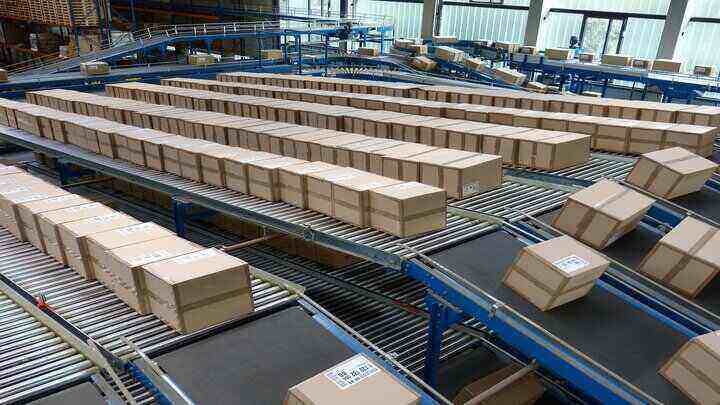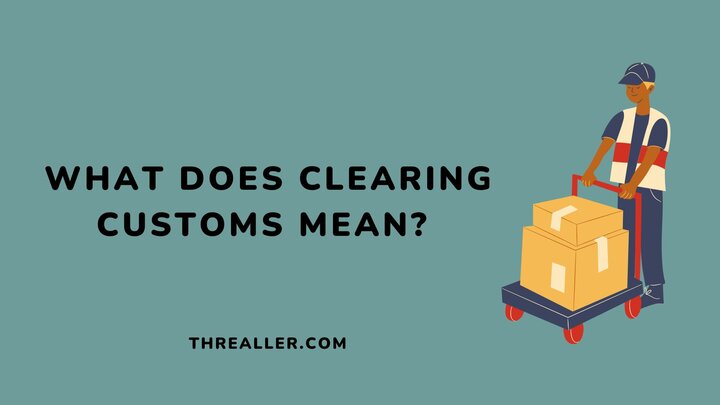If your goal is to sell products within and outside your country, you need to understand what clearing customs means and embrace it. The process refers to successfully moving an international shipment through a customs office or border authority.
In other words, it involves the payment of taxes and duties relating to import or export. After successfully clearing a shipment for delivery, such a shipment gets a stamp of approval, or a customs cleared status. This means it is eligible for its next destination.
Moving forward in this guide, I will explain how long the process may take, the various stages involved, and common reasons for shipment delays.
How Long Does Clearing Customs Take?

Clearing customs is usually a fast process. In fact, it can be done within 24 hours if you have all the necessary documents. However, after clearing customs, you still need your package or shipment to be discharged.
This is usually what takes time. Getting a discharge for your shipment may take days or weeks, especially if the port is congested.
While there is little you can do to change this, a few factors can help you know what to expect regarding a discharge. They include:
- The type of shipment
- How efficient is your customs broker is
- The regulation that guides the “from” and “to” destinations (for example, U.S. and China dealings experience more extended clearance).
Customs Clearance Process
Since your chances of clearing customs and getting your package faster increases with accuracy during processing, here are the essential steps you must fulfill to successfully clear customs:
1. Document inspection
When a shipment arrives at a port, it undergoes inspection by Customs and Border officials. During this process, shipment paperwork is reviewed for accuracy and correctness.
As an e-commerce seller, common documents you should include in international shipments are:
- Proof of insurance
- Invoice
- Port spending (when applicable)
- A packing list
- Certificate of origin (when applicable)
- Air waybill and bill of lading
- Pre-shipment inspection certificate (when applicable)
- Transportation Invoice
Once the necessary documents for your shipment are available and genuine, they are safe for entry into the recipient’s country.
2. Tax and duty payment
The payment of taxes or duties on the shipment is what follows a successful inspection. How much you end up paying often depends on the following:
- Type of goods you want to ship
- Customs law applicable to it
- The value of your package
Once you pay what you owe in terms, your package will be released for delivery. Please note that most international shipments feature “DDP” (delivered duty paid), meaning all tax payments have been made, and the recipient can get their package without extra cost.
However, if the status of tax and duty payment reads “DDU” (delivered duty unpaid), the receiver has to pay the customs authority in his or her country to receive the goods.
3. Shipment release
Shipment release will only occur when you fulfill taxes and duties payment. In addition, your package will be checked to determine if it will be released immediately or conditionally.
Conditional release often applies to toxic or radioactive chemicals with appropriate labels and packaging. This stage is responsible for ensuring that every cleared package complies with existing regulations.
5 Reasons Your Package Maybe Stuck in Customs
Incoming goods may experience customs delays for several reasons, even after fulfilling all the necessary obligations. Here is a list of some common mistakes that can delay the release of your item:
1. HTS code error
HTS (Harmonized Tariff Schedule) codes apply to U.S. Customs. Other countries have different codes. The role of these codes is to provide you with detailed information about the taxes and tariffs applicable to your package.
If your choice of HTS code does not apply to your package, there is a huge chance it will be stuck in customs until you get the paperwork right.
2. Missing or incorrect paperwork
If your shipments do not have any paperwork or some are missing, you will face significant delays at the clearing area.
Aside from the HTS code paperwork, you need a commercial invoice, the bill of lading, a packing list, and other documents for clearance. There are 3rd-party companies that can also help with this if you are not up for the stress.
3. Backlogs due to congestion
Ports are always busy, but some periods (especially festive periods) are known to be busier than others. If this is the case, your package may take a while to leave a port.
While it is advisable to forecast a 2 to 4-week processing period for awaiting shipments, bustling ports may have you wait more than a month.
4. Shipment type
An LCL (less than container load) shipment implies your order cannot fill a container. To clear such an order, port officers need supporting orders that can match the space left by your package.
Although finding a supporting package should not take all the time in the world, there are instances where it can result in significant delays at customs.
The best way to avoid LCL delays is to opt for FCL (full container load) if you have the capacity.
5. X-ray or scanning
Occasionally, shipments undergo X-ray scans. If for some reason, your shipment falls in this category, there is nothing you can do about the slight delay that will follow.
Excellent custom brokers, however, will inform the package sender and receiver beforehand that the package will have to undergo a scan.
FAQs
What happens after you clear customs?
Once your international shipment is customs cleared, it is free and ready to move to its next destination.
How long do parcels stay in customs?
Parcels can undergo customs regulations and processing for about 12 to 24 hours.
You should consider this when presenting a delivery date to your buyers.
Can the sender pay customs charges?
Senders can pay customs charges if such a pre-agreement is in place with the receiver. However, receivers mostly shoulder this responsibility.
Clearing Customs in a Nutshell
Clearing customs is an international procedure that can be slightly unpredictable. It involves three major stages — inspection, documentation, and shipment release, which should be completed in less than a month.
However, if there are errors in your package preparation or you are sending a shipment between two countries not in a full alliance, such shipments may be delayed.
I hope you found this guide helpful. After clearing customs, couriers (like DHL or FedEx) must clear your shipment before delivering it to your doorstep. To know what to expect, please see how long DHL clearance takes.
Thanks for reading.

